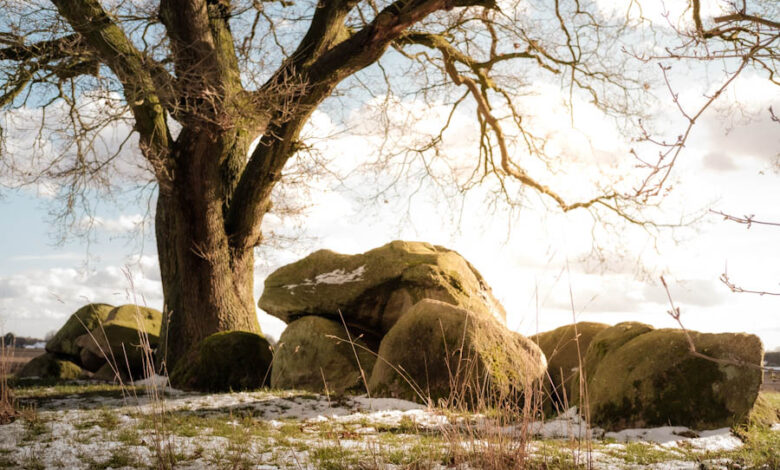
About the dolmens in the Netherlands
The Netherlands, renowned for its picturesque landscapes, windmills and tulip fields, holds a lesser-known treasure within its borders: the enigmatic dolmens (hunebedden). These megalithic structures, scattered across the northeastern part of the country, provide a fascinating glimpse into the past. Let’s explore the intriguing world of dolmens in the Netherlands, delving into their numbers, age and the mysteries surrounding their purpose.
How many dolmens are there in the Netherlands?
The Netherlands boasts a significant number of dolmens, with over 50 known sites scattered throughout the country. These impressive structures are predominantly concentrated in the northeastern provinces of Drenthe and Groningen, though several others can be found in the southern regions of Limburg and Brabant.
How old are the dolmens?
The dolmens in the Netherlands date back to the Neolithic period, making them several thousand years old. The oldest dolmens are estimated to be around 5,000 years old, originating from the Funnelbeaker culture (also known as the TRB culture) that existed from 4,300 to 2,800 BCE. These structures represent an extraordinary feat of engineering and stand as a testament to the ingenuity of our ancient ancestors.
The Dolmens’ Unique Design
Dolmens are characterized by large vertical stones supporting massive capstones. The stones were typically sourced from nearby areas, transported, and arranged with remarkable precision. The construction techniques employed by our Neolithic ancestors continue to astound researchers and visitors alike.
Why were the dolmens ever built?
The precise purpose behind the construction of dolmens remains a subject of speculation and wonder. Several theories attempt to shed light on their intended function, but their true significance is still open to interpretation. Here are some prevailing hypotheses:
Burial Sites
One widely accepted theory is that dolmens served as burial chambers. Archaeological excavations have unearthed human remains, pottery and other grave goods, supporting this notion. These collective graves may have been used by communities over an extended period for multiple interments.
Ancestral Worship
Another hypothesis suggests that dolmens were sacred places where ancestral spirits were venerated. The reverence for ancestors played a significant role in ancient societies and these stone structures could have been the focal points for communal rituals and ceremonies.
Cosmic Alignments
Dolmens often exhibit alignments with celestial bodies, such as the rising or setting sun on solstices and equinoxes. Some researchers propose that these structures may have been used as astronomical observatories or calendars, enabling early societies to track the seasons and mark important celestial events.
Social and Cultural Centers
Dolmens could have functioned as gathering places for social, political or economic activities. Their imposing presence would have made them natural meeting points for communities, fostering a sense of cohesion and identity.
The dolmens in the Netherlands provide a captivating link to our ancient past, offering glimpses into the lives, beliefs and practices of our Neolithic predecessors. These enigmatic structures continue to inspire awe and curiosity, challenging us to unravel the mysteries that surround them. They are not merely stone monuments; they are gateways to an age long gone, beckoning us to explore and appreciate the wonders that lie beneath the surface of our modern world.



